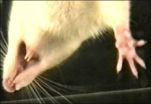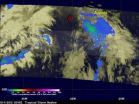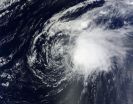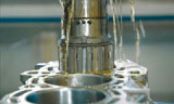(Press-News.org) CHICAGO (October 5, 2012) – Researchers from East Carolina University used a new technique of genotyping to identify the source of a hematology clinic outbreak of Mycobacterium mucogenicum, a gram-positive, acid-fast bacteria found in tap water. This is the first outbreak of M. mucogenicum in an ambulatory care setting; five other outbreaks have been reported in hospital settings since 1995. The study was published in the November issue of Infection Control and Hospital Epidemiology, the journal of the Society for Healthcare Epidemiology of America.
Using repetitive sequence-based polymerase chain reaction ( Diversilab® system), the first time this genotyping method was used in an M. mucogenicum outbreak, researchers determined that a water sample from an exam room faucet with an aerator had the same bacteria as the infected patients, and all were genetically similar to control strain of M. mucogenicum. Aerators have been found to be reservoirs for bacteria in previous outbreaks.
The use of new technology to match the genetic material in the bacteria established the source of the outbreak; however, since M. mucogenicum is commonly found in tap water in the U.S. and worldwide, researchers needed to continue their investigation to determine how the bacteria was being transmitted to the patients.
The outbreak involved four young sickle cell patients. Since all four patients had long-term lines implanted (i.e., ports used to deliver medication into the bloodstream), they were probably exposed to M. mucogenicum during outpatient visits when the lines were accessed. As part of the outbreak investigation, researchers collected water samples from two faucets in the exam rooms and performed an audit of infection control practices, including hand hygiene compliance, use of appropriate techniques for injections, and other procedures.
While reviewing the infection control practices of the unit, preparation of intravenous medications by one nurse, who was involved in the care of all four patients, was found to be the only breach in safe practices. During the period of infection, this healthcare worker prepared injections at the sink counter. It's likely that the fluid bag being used to prepare injections became contaminated when the worker washed her hands.
As a result of the investigation, all of the water aerators were removed from the faucets and educational information stressing that sinks were not to be used as work spaces were distributed to staff. Since the changes, no new cases of M. mucogenicum bloodstream infection have been identified. All four patients had their implanted lines removed and recovered from the infection after antibiotics.
"This study demonstrates the efficacy of using genotyping technology in identifying the source of the outbreak," said Muhammad Salman Ashraf, MD, assistant professor at The Brody School of Medicine at East Carolina University. "But it also points to the need for proper infection control practice in clinic settings, and that faucet aerators should be avoided in all healthcare facilities, especially those caring for immunosuppressed patients."
###
Muhammad Salman Ashraf, MD, Marian Swinker, MD, Kerri L. Augustino, MS, Delores Nobles, MT, MPH, CIC; Charles Knupp, MD, Darla Liles, MD, John Christie, MD, Ph.D., Keith M. Ramsey,MD "Outbreak of Mycobacterium mucogenicum Bloodstream Infections among Patients with Sickle Cell Disease in an Outpatient Setting." Infection Control and Hospital Epidemiology 33:11 (November 2012).
Published through a partnership between the Society for Healthcare Epidemiology of America and The University of Chicago Press, Infection Control and Hospital Epidemiology provides original, peer-reviewed scientific articles for anyone involved with an infection control or epidemiology program in a hospital or healthcare facility. ICHE is ranked 15 out of 140 journals in its discipline in the latest Journal Citation Reports from Thomson Reuters.
SHEA is a professional society representing more than 2,000 physicians and other healthcare professionals around the world with expertise in healthcare epidemiology and infection prevention and control. SHEA's mission is to prevent and control healthcare-associated infections and advance the field of healthcare epidemiology. The society leads this field by promoting science and research and providing high-quality education and training in epidemiologic methods and prevention strategies. SHEA upholds the value and critical contributions of healthcare epidemiology to improving patient care and healthcare worker safety in all healthcare settings. Visit SHEA online at www.shea-online.org, www.facebook.com/SHEApreventingHAIs and @SHEA_Epi.
Genotyping helps identify source of clinic infection outbreak
2012-10-05
ELSE PRESS RELEASES FROM THIS DATE:
MIT Research: What number is halfway between 1 and 9? Is it 5 -- or 3?
2012-10-05
CAMBRIDGE, Mass. — Ask adults from the industrialized world what number is halfway between 1 and 9, and most will say 5. But pose the same question to small children, or people living in some traditional societies, and they're likely to answer 3.
Cognitive scientists theorize that that's because it's actually more natural for humans to think logarithmically than linearly: 30 is 1, and 32 is 9, so logarithmically, the number halfway between them is 31, or 3. Neural circuits seem to bear out that theory. For instance, psychological experiments suggest that multiplying the ...
How will smart cars affect the future of driving?
2012-10-05
California, Nevada, and Florida have already made driverless cars street-legal, and continuing advances in the technology have led many to predict that the commercialization of automated vehicles is a real possibility in the not-so-distant future. As driverless vehicles become more commonplace, it is important to understand how humans interact with this new technology. The Human Factors special issue on automation, featuring the latest articles on designing automated vehicles with the driver in mind, is now available online. The October 2012 issue may be found at http://hfs.sagepub.com/content/current. ...
'Disgusted' rats teaching scientists about nausea, work may lead to new cancer treatments
2012-10-05
Nausea is a common and distressing side effect of many drugs and treatments. Unlike vomiting, nausea is not well understood, but new research by University of Guelph scientists may soon change that.
Guelph PhD student Katharine Tuerke, neuroscience researcher Cheryl Limebeer and Prof. Linda Parker in the Department of Psychology believe they've found the mechanism in the brain that is responsible for the sensation of nausea – with the help of some "disgusted" rats.
Their study was published this week in Journal of Neuroscience.
"Although everyone has experienced ...
Tree nut research may unexpectedly lead to medical advances
2012-10-05
This press release is available in Spanish.
Prescription drugs that today help patients fight severe fungal infections might tomorrow be even more effective, thanks to unexpected findings from agriculture-based, food-safety-focused studies by U.S. Department of Agriculture (USDA) scientists and their colleagues.
Petri-dish experiments conducted by now-retired USDA Agricultural Research Service (ARS) research leader Bruce C. Campbell, ARS molecular biologist Jong H. Kim, and their co-investigators suggest that pairing conventional antifungal medicines with natural, edible ...
NASA notes Nadine now no more
2012-10-05
Twenty-three days after Nadine was born, the tropical cyclone's life came to an end in the northeastern Atlantic Ocean. NASA's TRMM satellite caught a look at the fading Nadine one final time on Oct. 3 before it dissipated.
NASA's Tropical Rainfall Measuring Mission (TRMM) satellite passed above long-lasting Nadine for the last time before the tropical storm's dissipation on October 4, 2012 at 0249 UTC (10:49 p.m. EDT October 3, 2012).
TRMM measures rainfall from space and there was very little remaining in Nadine when it passed overhead. Rainfall data from TRMM's Microwave ...
NASA satellites indicate wind shear taking toll on Oscar
2012-10-05
Satellite data is showing that northwesterly wind shear is taking a toll on Tropical Storm Oscar in the central Atlantic and it is expected to dissipate the storm late on Oct. 5, 2012.
NASA's Aqua satellite passed over Tropical Storm Oscar on Oct. 4 at 1335 UTC (9:35 a.m. EDT) and the Moderate Resolution Imaging Spectroradiometer (MODIS) instrument captured a true-color image of the storm. The imagery showed bulk of Oscar's clouds and showers were southeast of the center of circulation as a result of wind shear.
On Oct. 5 at 5 a.m. EDT, Oscar's maximum sustained winds ...
Scratching the surface: Stanford engineers examine UV effects on skin mechanics
2012-10-05
Reinhold Dauskardt, PhD, of Stanford's Department of Materials Science and Engineering has been studying skin for years. But when he sent his students to look for data on the mechanical properties of skin, they came back empty-handed. A lot was known about skin structure and disease, but few papers actually talked about its mechanical function – its ability to stretch and resist tension without tearing. "That motivated us to get more interested in the skin itself," said Dauskardt.
He and his team, including Ph.D. student Krysta Biniek and postdoctoral researcher Kemal ...
Using less gas and oil to get where you're going
2012-10-05
An engine without oil will not survive for very long. Pistons need plenty of lubricant in order to be able to move within the cylindrical sleeves in the engine block. Two things are known to raise the resultant level of friction. The first is attributed to distortion of the cylindrical bore hole when the cylinder head is attached, which is known as static distortion. The second occurs when the engine is running and temperatures warp the bore hole. The extent of this thermal distortion depends on prevailing engine temperatures and the specific engine model. In reality, the ...
Origin of ultra-fast manipulation of domain walls discovered
2012-10-05
An international team of researchers has found at the free electron laser FLASH a surprising effect that leads in ferromagnetic materials to a spatially varying magnetization manipulation on an ultrafast timescale. This effect could be the key to further miniaturization and performance increase of magnetic data storage devices. From Mainz, the group of Professor Dr. Mathias Kläui from the Institute of Physics at Johannes Gutenberg University Mainz and in particular Felix Büttner, a member of the Graduate School of Excellence "Materials Science in Mainz", were involved. ...
Testing can be useful for students and teachers
2012-10-05
Pop quiz! Tests are good for: (a) Assessing what you've learned; (b) Learning new information; (c) a & b; (d) None of the above.
The correct answer?
According to research from psychological science, it's both (a) and (b) – while testing can be useful as an assessment tool, the actual process of taking a test can also help us to learn and retain new information over the long term and apply it across different contexts.
New research published in journals of the Association for Psychological Science explores the nuanced interactions between testing, memory, and learning ...



